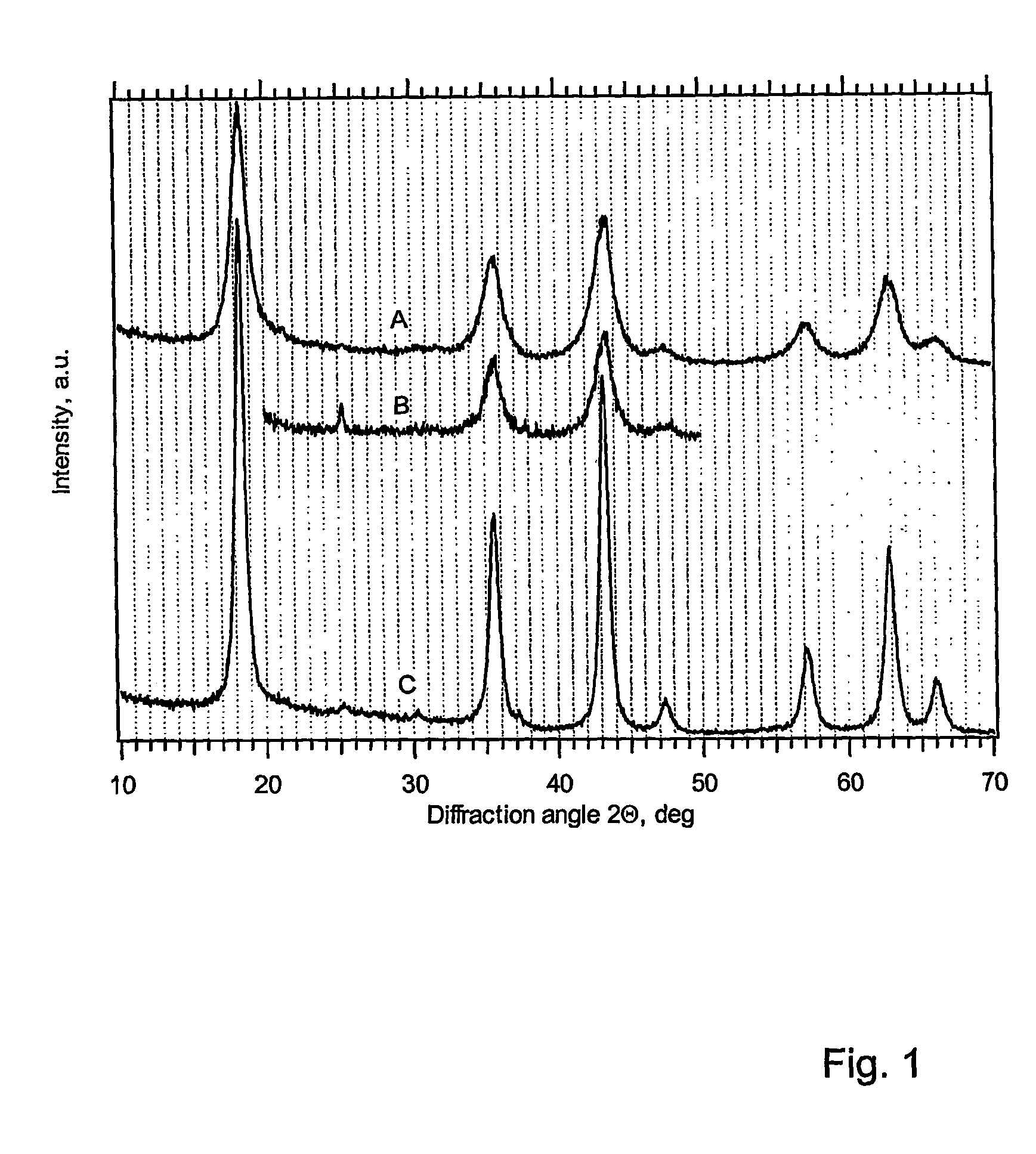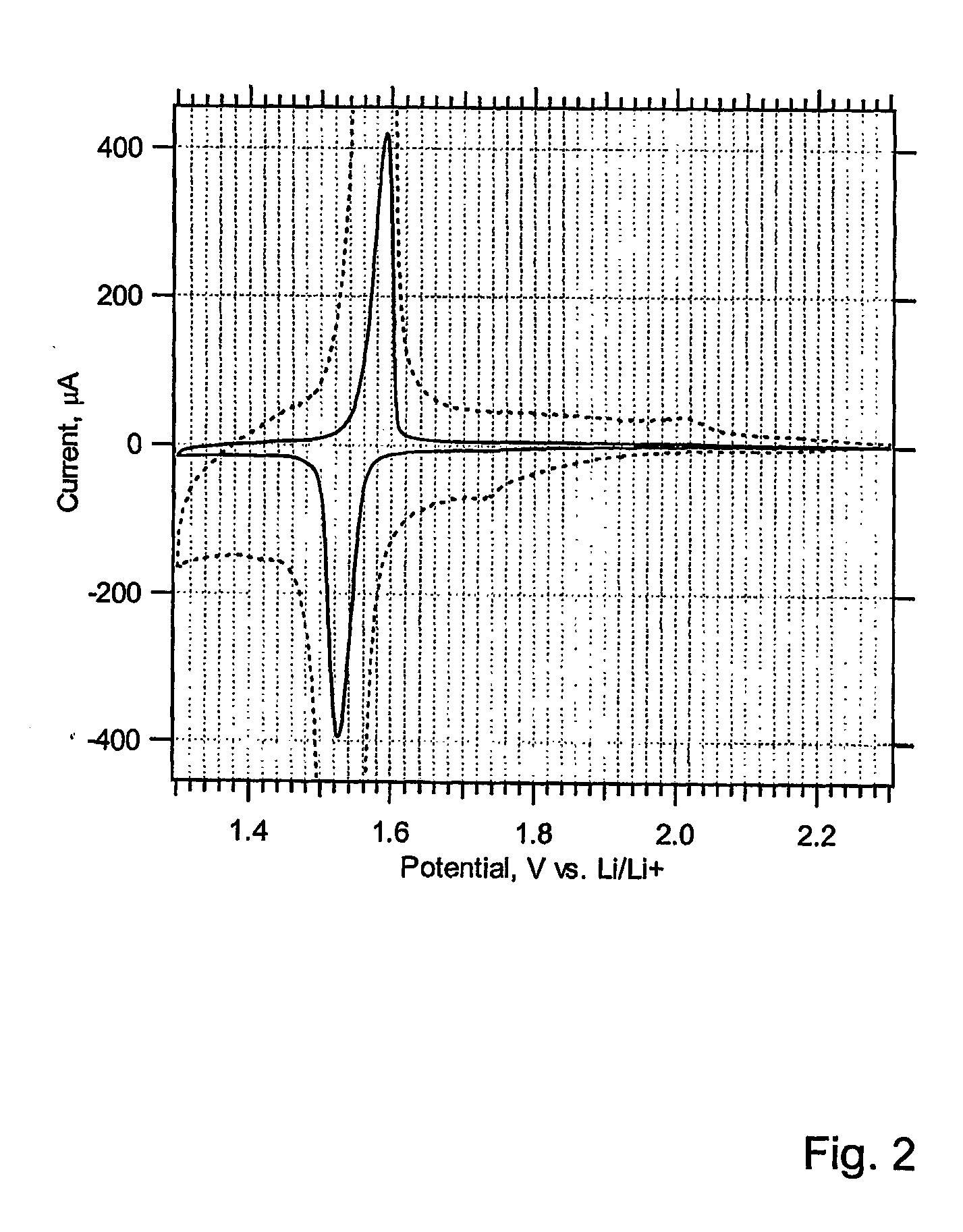High performance lithium titanium spinel li4t15012 for electrode material
a lithium titanium spinel, high-performance technology, applied in the direction of alkali titanates, cell components, natural mineral layered products, etc., can solve the problems of nanocrystalline electrodes showing considerable irreversibility, low li-insertion capacity of 12 materials at high charging rates, and failure to achieve a successful strategy
- Summary
- Abstract
- Description
- Claims
- Application Information
AI Technical Summary
Problems solved by technology
Method used
Image
Examples
example 2a
The 100 C_Rate Data Set as Plotted in FIG. 5 and Contained in Table 1
[0066] These data show that particulate tetra-Lithium Titanate qualifies for use in anode or cathode service in energy storage devices based on Li.sup.+ ion electron pair insertion / desertion cycles that function at a 100 C_rate. Using a pass / fail test based on equal to or greater that 90% working charge capacity passes and less than 90% fails, the test data may be screened to produce two subsets. This screening process is shown graphically in FIG. 5. On an individual sample basis a qualified performance range was determined, that range being a surface area of equal to or greater than 20 m.sup.2 / g to equal to or less than 160 m.sup.2 / g.
example 3a
The 150 C_Rate Data Set as Plotted in FIG. 6 and Contained in Table 1
[0067] These data show that particulate tetra-Lithium Titanate qualifies for use in anode or cathode service in energy storage devices based on Li.sup.+ ion electron pair insertion / desertion cycles that function at a 150 C_rate. Using a pass / fail test based on equal to or greater that 80% working charge capacity passes and less than 80% fails, the test data may be screened to produce two subsets. This screening process is shown graphically in FIG. 6. On an individual sample basis a qualified performance range was determined, that range being a surface area of equal to or greater than 30 m.sup.2 / g to equal to or less than 140 m.sup.2 / g.
example 4a
The 200 C_Rate Data Set as Plotted in FIG. 7 and Contained in Table 1
[0068] These data show that particulate tetra-Lithium Titanate qualifies for use in anode or cathode service in energy storage devices based on Li.sup.+ ion electron pair insertion / desertion cycles that function at a 200 Crate. Using a pass / fail test based on equal to or greater that 80% working charge capacity passes and less than 80% fails, the test data may be screened to produce two subsets. This screening process is shown graphically in FIG. 7. On an individual sample basis a qualified performance range was determined, that range being a surface area of equal to or greater than 30 m.sup.2 / g to equal to or less than 120 m.sup.2 / g.
PUM
| Property | Measurement | Unit |
|---|---|---|
| Length | aaaaa | aaaaa |
| Length | aaaaa | aaaaa |
| Volume | aaaaa | aaaaa |
Abstract
Description
Claims
Application Information
 Login to View More
Login to View More - R&D
- Intellectual Property
- Life Sciences
- Materials
- Tech Scout
- Unparalleled Data Quality
- Higher Quality Content
- 60% Fewer Hallucinations
Browse by: Latest US Patents, China's latest patents, Technical Efficacy Thesaurus, Application Domain, Technology Topic, Popular Technical Reports.
© 2025 PatSnap. All rights reserved.Legal|Privacy policy|Modern Slavery Act Transparency Statement|Sitemap|About US| Contact US: help@patsnap.com



